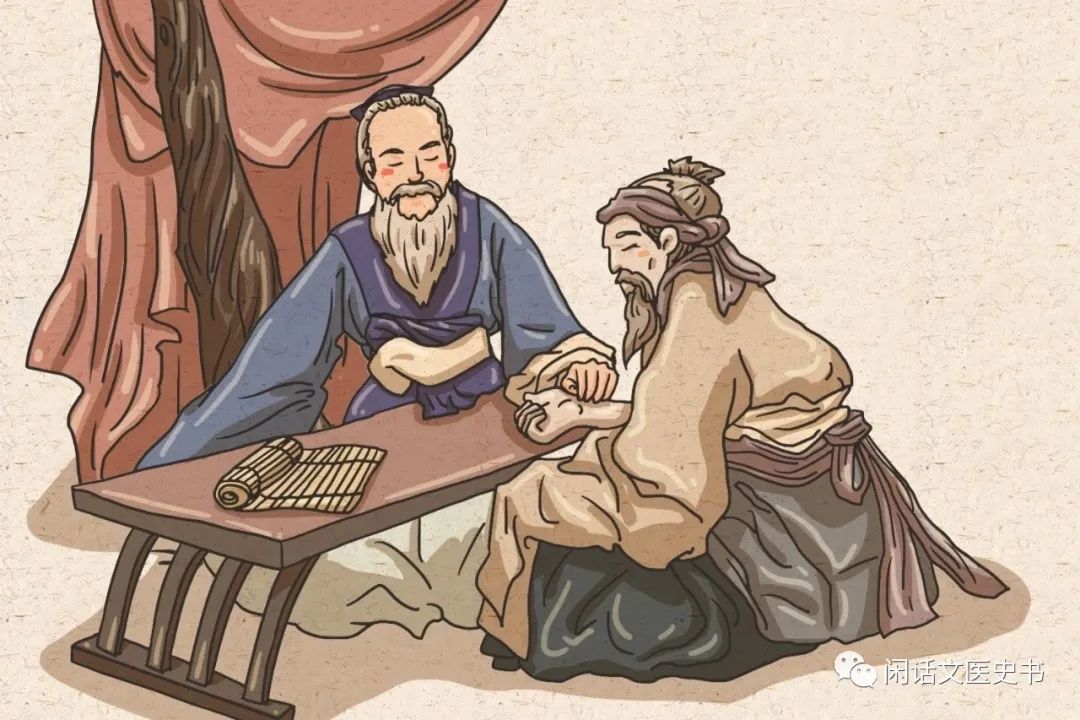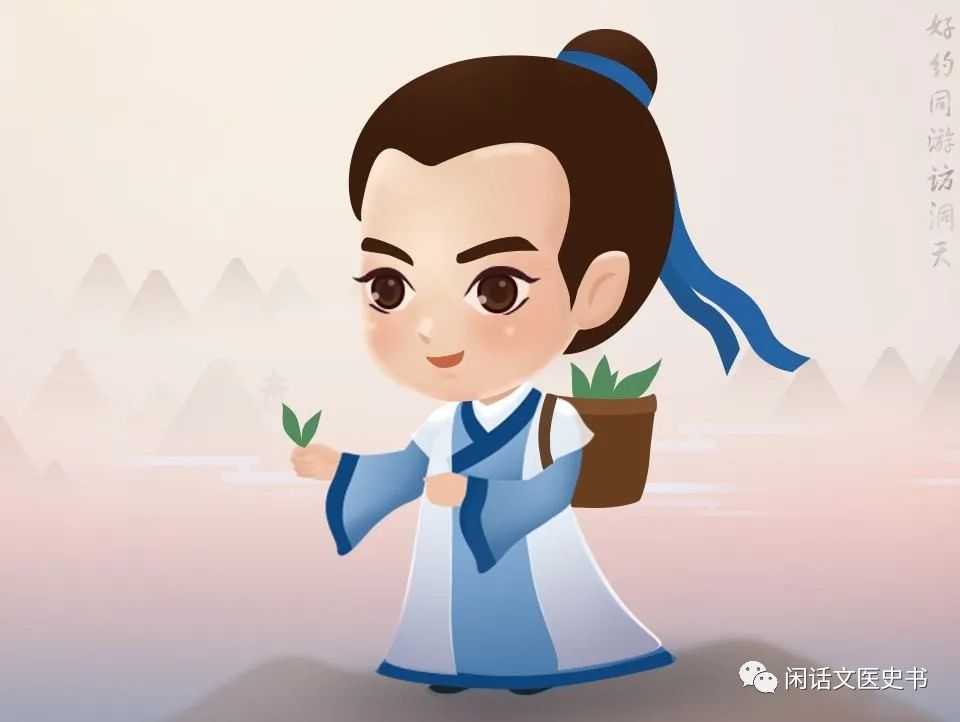A Brief Discussion on the Eight Principles of TCM Diagnosis

Summary of this article: 1. Overview 2. Exterior Syndrome 3. Interior Syndrome 4. Cold Syndrome
1. Xu Han Syndrome (Deficiency Cold Syndrome)
2. Shi Han Syndrome (Excess Cold Syndrome) 5. Heat Syndrome
1. Xu Re Syndrome (Deficiency Heat Syndrome)
2. Shi Re Syndrome (Excess Heat Syndrome) 6. Xu Syndrome (Deficiency Syndrome) 7. Shi Syndrome (Excess Syndrome) 8. Conclusion

1. Overview In Traditional Chinese Medicine (TCM), there are eight principles of diagnosis: Yin-Yang, Exterior-Interior, Cold-Heat, Deficiency-Excess. In fact, it can be simplified to six principles: Exterior-Interior, Cold-Heat, Deficiency-Excess, with Yin-Yang as the overarching principle. The exterior, heat, and excess are considered Yang; while the interior, cold, and deficiency are considered Yin. Therefore, the Ming dynasty physician Zhang Jingyue stated in the “Complete Works of Jingyue”: “Although the medical path is extensive, it can be summarized in one phrase: Yin-Yang.” This means that while the medical field is vast, it can be encapsulated in the concept of Yin-Yang. Thus, distinguishing between exterior and interior, cold and heat, deficiency and excess is particularly important in the treatment of diseases.

2. Exterior Syndrome To treat exterior syndromes, one must release the exterior, which refers to symptoms caused by external pathogenic factors invading the body. The six external pathogens are: Wind, Cold, Heat, Dampness, Dryness, and Fire. The most common exterior syndromes are caused by invasion of Wind-Cold, Wind-Heat, Wind-Dryness, and Wind-Dampness. The pulse for exterior syndromes is generally floating.
3. Interior Syndrome Interior syndromes are quite broad. In addition to exterior syndromes, there is also a half-exterior, half-interior condition, known as Shaoyang disease in the “Treatise on Cold Damage”. Treatment of interior syndromes must be based on specific conditions, which may involve purging, clearing heat, invigorating blood, moving Qi, guiding stagnation, or clearing damp-heat, etc. The pulse for interior syndromes is generally deep, but varies according to the specific etiology and pathogenesis. For example, a strong heat condition may present with a rapid and forceful pulse, while Qi stagnation may present with a wiry pulse, blood stasis with a choppy pulse, and damp-heat with a slippery and rapid pulse, etc.

4. Cold Syndrome
1. Xu Han Syndrome (Deficiency Cold Syndrome) What is Cold Syndrome? There is a saying: “Yin deficiency leads to cold.” This means that weakness of Yang Qi in the body leads to cold symptoms. This type of cold is a manifestation of deficiency, such as aversion to cold, cold limbs, alleviation with warmth, pale complexion, clear and profuse urination, pale and swollen tongue, white coating, and a deep, slow, and weak pulse. This is a manifestation of deficiency cold. To treat deficiency cold, one must warm Yang and tonify deficiency. The Ming dynasty physician Zhang Jingyue stated in the “Complete Works of Jingyue”: “Nourish the source of fire to dispel the shadow of Yin.” “Nourish fire” refers to warming or tonifying Yang, while “shadow of Yin” refers to deficiency cold. This means that deficiency cold can be treated by warming Yang. When Yang Qi is sufficient, the symptoms of deficiency cold will naturally subside, and the body will regain health.
2. Shi Han Syndrome (Excess Cold Syndrome)
Another type of cold syndrome is Shi Han, also known as Excess Cold, which is caused by cold pathogens. This means that the cold evil has genuinely harmed the body. Xu Han is caused by insufficient Yang Qi, which is a deficiency condition, while Shi Han is caused by the invasion of cold pathogens, which is an excess condition. Therefore, Xu Han and Shi Han are different; Xu Han requires warming and tonifying to replenish the insufficient Yang Qi, restoring balance and leading to recovery. Shi Han requires dispelling and scattering the excess cold to restore balance and achieve recovery. The pulse for Shi Han is generally deep, tight, and forceful. If it is an exterior Shi Han, the pulse is floating and tight. Whether it is Xu Han or Shi Han, the principle remains: “Cold must be treated with heat,” requiring the use of warming herbs.
5. Heat Syndrome
1. Xu Re Syndrome (Deficiency Heat Syndrome) What is Heat Syndrome? There is a saying: “Yin deficiency leads to heat.” This means that insufficient Yin in the body leads to heat symptoms. This type of heat is a manifestation of deficiency heat, such as tidal fever, night sweats, five hearts heat, red tongue with little coating, and thin rapid pulse. To treat deficiency heat, one must nourish Yin and strengthen water. As the Ming dynasty physician Zhang Jingyue stated in the “Complete Works of Jingyue”: “Strengthen the master of water to control the Yang light.” “Strengthen water” is a metaphor for nourishing Yin, while “Yang light” refers to deficiency heat. This means that deficiency heat can be treated by nourishing Yin. When Yin is sufficient, the symptoms of deficiency heat will naturally subside, and the body will regain balance, leading to health.
2. Shi Re Syndrome (Excess Heat Syndrome)
Another type of heat syndrome is Shi Re, also known as Excess Heat, which is caused by heat pathogens. This means that the Yang heat has genuinely harmed the body. Xu Re is caused by insufficient Yin, which is a deficiency condition, while Shi Re is caused by the invasion of heat pathogens, which is an excess condition. Therefore, Shi Re and Xu Re are different; Xu Re requires nourishing Yin to replenish the insufficient Yin, restoring balance and leading to recovery. Shi Re requires clearing heat and draining fire to eliminate the excess heat pathogens, restoring balance and leading to recovery. The pulse for Shi Re is generally rapid and forceful. From the perspective of warm disease theory, it can be divided into Wei, Qi, Ying, and Xue levels, where Wei level can be seen as an exterior heat syndrome. As it progresses to Qi level, especially Ying and Xue levels, it often injures Yin, leading to some manifestations of deficiency heat. This indicates that both excess and deficiency can coexist. Therefore, when treating, we must be flexible to better align with the pathogenesis. Whether it is Xu Re or Shi Re, the principle remains: “Heat must be treated with cold,” requiring the use of cooling herbs.
 6. Xu Syndrome (Deficiency Syndrome)
6. Xu Syndrome (Deficiency Syndrome)
What is Xu Syndrome? There is a saying: “When essence and Qi are depleted, it leads to deficiency.” This means that insufficient internal Qi, blood, Yin, and Yang leads to deficiency syndromes. There are four major deficiency syndromes: Qi deficiency, blood deficiency, Yin deficiency, and Yang deficiency. However, these four deficiency syndromes are closely related, “Qi is the commander of blood, and blood is the mother of Qi,” so Qi deficiency can lead to blood deficiency, and blood deficiency can lead to Qi deficiency, resulting in both Qi and blood deficiency. Yin and Yang are interdependent; damage to Yang affects Yin, and damage to Yin affects Yang, leading to both Yin and Yang deficiency. Therefore, there are also conditions of Qi and blood deficiency, Qi and Yin deficiency, and Yin and Yang deficiency. “Deficiency must be supplemented,” Qi deficiency is treated by tonifying Qi, blood deficiency by tonifying blood, Yin deficiency by nourishing Yin, Yang deficiency by warming Yang, and both Qi and blood deficiency by tonifying both, Qi and Yin deficiency by benefiting Qi and nourishing Yin, and both Yin and Yang deficiency by tonifying both. When the weak areas are supplemented, deficiency syndromes will naturally resolve. The pulse for deficiency syndromes is generally thin, weak, and without strength.
7. Shi Syndrome (Excess Syndrome) What is Shi Syndrome? There is a saying: “When pathogenic Qi is abundant, it leads to excess.” This means that an excess of pathogenic Qi causes a pathological state known as excess syndrome. There is a type of Wind-Cold exterior excess syndrome, which can belong to both exterior and excess syndromes. Other interior excess syndromes are also very broad, including cold excess, heat excess, damp-heat, Qi stagnation, blood stasis, water retention, phlegm turbidity, food accumulation, and parasitic accumulation, etc. “Excess must be drained,” for exterior Wind-Cold excess syndrome, one must release the exterior and disperse cold; for excess cold, one must disperse cold; for excess heat, one must clear heat; for damp-heat, one must clear heat and resolve dampness; for Qi stagnation, one must move Qi; for blood stasis, one must invigorate blood and resolve stasis, or even eliminate stasis; for water retention, one must resolve water retention; for phlegm turbidity, one must resolve phlegm and transform turbidity; for food accumulation, one must digest food and guide stagnation; for parasitic accumulation, one must expel parasites, thus eliminating these excess pathological products will lead to recovery from excess syndrome. The pulse for excess syndromes is generally wiry, tight, slippery, rapid, and forceful. The human body is complex, diseases are complex, and pathogenesis is complex. Therefore, exterior and interior, cold and heat, deficiency and excess can occur simultaneously. For example, when cold and heat are mixed, one must use both methods to dispel cold and clear heat; when deficiency and excess coexist, one must use both methods to tonify deficiency and drain excess to achieve better therapeutic effects.

8. Conclusion Let us summarize: The eight principles are: Yin-Yang, Exterior-Interior, Cold-Heat, Deficiency-Excess. The exterior, heat, and excess are Yang; while the interior, deficiency, and cold are Yin. For exterior conditions, one must release the exterior. The pulse is floating. For interior conditions, treatment is based on specific situations. The pulse is deep. Cold: Yang deficiency leads to cold, which is Xu Han, with a deep, slow, and weak pulse. There is also Shi Han, with a deep, tight, and forceful pulse. Cold must be treated with heat. Heat: Yin deficiency leads to heat, which is Xu Re, with a thin and rapid pulse. There is also Shi Re, with a rapid and forceful pulse. Heat must be treated with cold. Deficiency: When essence and Qi are depleted, it leads to deficiency, with a weak, thin, and powerless pulse. Deficiency must be supplemented. Excess: When pathogenic Qi is abundant, it leads to excess, with a wiry, tight, slippery, rapid, and forceful pulse. Excess must be drained. We simplify the complex, moving from thick to thin, and from thin to thick, first establishing a broad framework, then exploring the finer details within that framework. This allows us to grasp the correct direction and achieve precise differentiation, enabling more accurate prescription and treatment of diseases.

July 12, 2022, Written in Beijing

